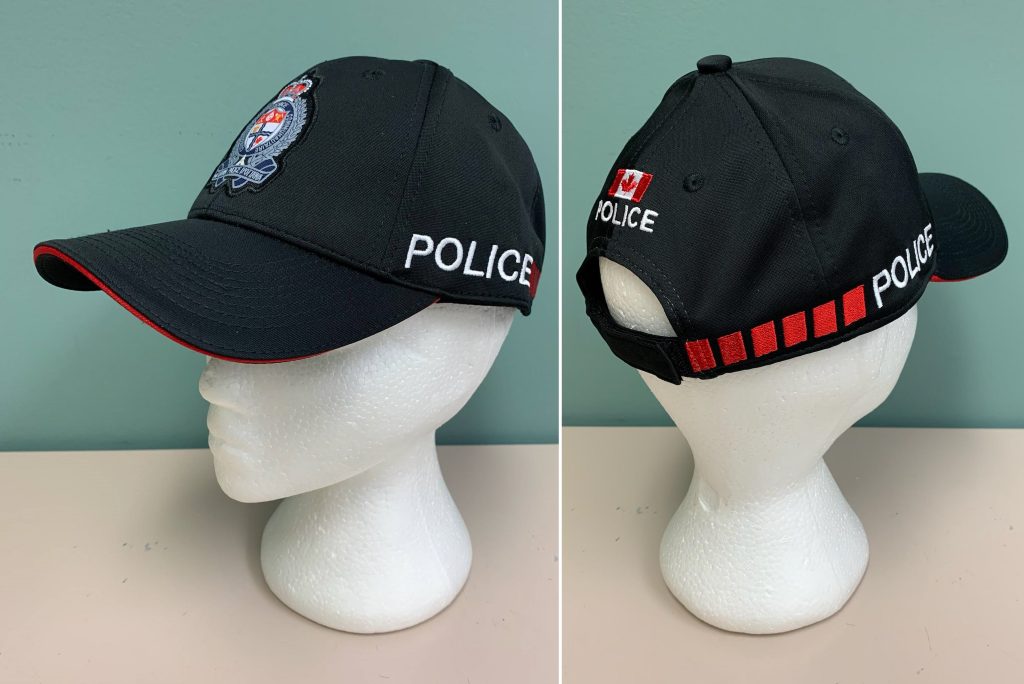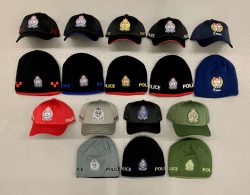
Features
Traditional versus operational: Moving away from forage caps to ball caps
July 26, 2022 By Drew Clark
 Photo credit: Ottawa Police Service
Photo credit: Ottawa Police Service Ever since Gloucester, Ottawa and Nepean Police Services amalgamated in 1995, uniform members have pushing for the switch from the century-old forage cap to a ball cap. At the time, only special units like tactical, canine, ESU, traffic, bicycles and marine were approved to wear the police-issued ball caps, which left a sour note with other uniform units.
From the early 2000s to present, officers needed their staff sergeant’s permission or a doctor’s note to wear a “Tilley hat”, which provided protection against the sun. In 2019, the new Chief saw the benefits of moving away from the traditional navy forage cap with the red band to a new, more modern-looking OPS ball cap for all ranks in all uniformed sections.
It sounds like a simple enough change, but there is a lot to consider. The Quartermaster Unit (QMU) reviewed current police trends and fabrics from Commonwealth, Europe and Canada. This included distance tests to see which designs were most visible from eight feet, 24 feet and 56 feet away. Initial research showed the positive fiscal management savings that the QMU could gain from this head dress change, let alone the positive impact it would have on Service’s morale while restoring the uniformity of members.
In the QMU’s opinion, the UK police are ahead of North America in uniform ideas by five to 10 years. The QMU reached out in the early stages of research and development to ask a few UK Police Services about their “bump cap” design with interchangeable logo patches, head-mounted cameras, lightweight and water-resistant nylon, and white checker stripes.
A Ball Cap Working Group was formed, which included representation of Patrol Acting Superintendent, the Ceremonial Sergeant Major, Colleen Patrick of Grant Custom Products and the QMU. This group was tasked with reviewing fabric options and choosing a new design. The committee started with the patrol and senior officer sample designs and field tests, and oversaw the implementation of a new corporate standard pattern.

Photo credit: Ottawa Police Service
Having a cap configuration with 360 degrees of police markings will allow the community and any tactical overwatch to identify a police officer from a greater distance than the old front and back OPS logo ball caps. The OPS heraldic crest was added to the front replace the old shield crest, and being the nation’s capital, the Canadian flag is represented on the back panels to echo the flag on the front body armour name tag. To give homage to the traditional forage cap, the red trim on the peak and side angled checkers were depicted on the “Patrol” & “Senior Officer” ball caps.
After many months of field testing and four major sample patterns, the final product was issued to uniform officers in 2019 and 2020, under the acknowledgement that the caps are a one-for-one exchange process when the caps become unfit for duty—this eliminates any public misuse concerns. A standard forage cap and cap badge cost $82.50 (for the chief, it cost $164.50), and the ball cap cost $8.90, which is a savings of 90.5 per cent (and for the chief, a savings of 94.55 per cent). In addition, officers don’t need to add reports on CPIC for missing cap badges. In 2021, all specialty units have matching corporate standard ball caps per their uniform colour designs; Special Constables (royal blue), Auxiliaries (red & black checkers), Canine (black), Tactical (grey), Tact/ESU/UOF/Canine (green), UOF Instructors (red), Police Liaison (blue) and Uniform Civilians (navy).
From the Ball Cap Working Group, after four major design sample changes, a new OPS toque concept of a “beanie”—modelled after the Chicago Police and Ottawa Paramedics’ toques—was created in 2021. OPS has issued a simple design winter toque to uniform members since 2006 with 270 degrees of police markings, moving away from the 1880s to mid-1900s Canadian Wedge winter hat, or from the black Yukon hat of the 1950s to present. The removal of the hat badge from the Yukon winter hat will prevent possible injury from two metal attachments on the back of the badge. It has been replaced with an embroidered heraldic crest sewn to the front of the hat. The new beanie toque design mirrors the same corporate standard colour designs as the ball caps. This uniformity enables the public, as well as members, to easily identify the police in every season of the year.
There is also a cost benefit to these changes to the winter hats. A standard Yukon Hat and heraldic crest cost $68.05 (for the chief, the cost was $109.50), where as a beanie toque costs $7.95, providing a savings of 88.3 per cent (and 92.7 per cent for the chief), and reducing the number of badges that are lost because of faulty metal attachments.
Drew Clark is the Ottawa Police Service QMU Coordinator, with 20 years of Material Management.
Print this page